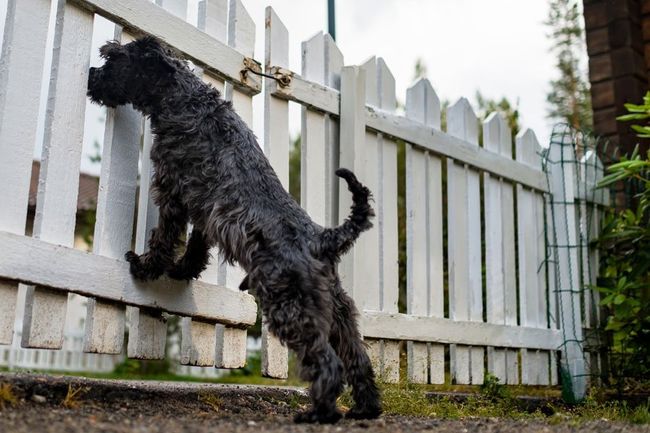Considerations When Designing A Fence For Your Dog
Designing the perfect backyard for your dog requires designing a great fence that will keep your dog safely in your yard and keep any threats out. Different dogs may need different types of fences, though. Here are some of the basic considerations to keep in mind as you start planning the best fence for your dog.
1. Does Your Dog Climb or Jump?
Your fence's height needs to be sufficient to keep your dog from jumping over it. If your dog is athletic, determined, or very large, this could mean your fence needs to be extra high. On the other hand, a smaller dog that's less athletic may not need such a high fence.
However, some dogs can also use their claws to help them scale a fence. If your dog tends to do this, look for a fencing type that keeps them from getting a grip. Or simply add a rolling top to the fence so the dog can't get over the top.
2. Does Your Dog Dig?
Dogs can also squeeze or may even dig under a fence that's not tightly fastened to the ground. Certain breeds of dogs, such as those that were bred to work at catching rats or hunting underground prey, may be especially inclined to dig under the fence. Terriers, dachshunds, and beagles are just a few examples of these types of dogs.
In this situation, you'll want to work with your fencing contractor to design a fence that extends below the ground. This way, when your dog digs a hole, they'll still hit a barrier and be unable to slip beneath the fence. Typically, a fence that has the lower edge buried 12-24 inches deep should deter digging.
3. Does Your Dog Get Stuck Easily?
Unless your fence is made of a solid surface (such as a solid wooden fence), you'll need to consider whether your dog could get his or her head or another body part stuck in the gaps or openings. This is especially important if your dog is accident-prone or spends a lot of time trying to get through the fence.
Check to make sure that the openings in the fence are much too small for your dog to squeeze their head through (you might be surprised how small that space is). And check that there are no spots in the fence design where your dog's foot might get caught if they rest their feet on the fence or try to climb over it.
4. Does Your Dog Want to See Out?
Some dogs love to see out of their yard and greet neighbors and strangers who walk past. However, this depends on your dog's temperament. If your dog is more timid, he or she may prefer a solid fence that feels safer. Or if your dog tends to bark loudly or act aggressive through the fence, an opaque fence surface may prevent complaints from the neighbors.
5. How Can Your Fence Design Improve Security?
Finally, keep in mind that your backyard fence shouldn't just keep your furry friends in. It should also protect your dog by deterring people who might want to enter the yard without permission. Whether they're after your dog or want access to your doggy door so they can burglarize your home, criminals can pose a real threat to your dog.
Security features such as a thorny hedge on the outside of the fence, anti-climbing paint, and extra fence height can help to deter people from climbing. You should also install complementary security features such as motion-sensing lights and security cameras for best results.
These basic considerations can help you to get a mental picture of what style of fence might work best for your dog. You can then start to plan the details, such as aesthetics. For more information about the types of fencing available, which ones are best suited to different types of dogs, and other helpful information, call a fence contractor such as
Gulf Coast Fence Co.
Browse Our Website
contact information
Address: 5603 Veterans Blvd. Pascagoula, MS 39581
Phone: 228-769-2677
Fax: 228-896-7764
Email: gulfcoastfenceco@yahoo.com
Business Hours:
- Mon - Fri
- -
- Sat - Sun
- Closed













